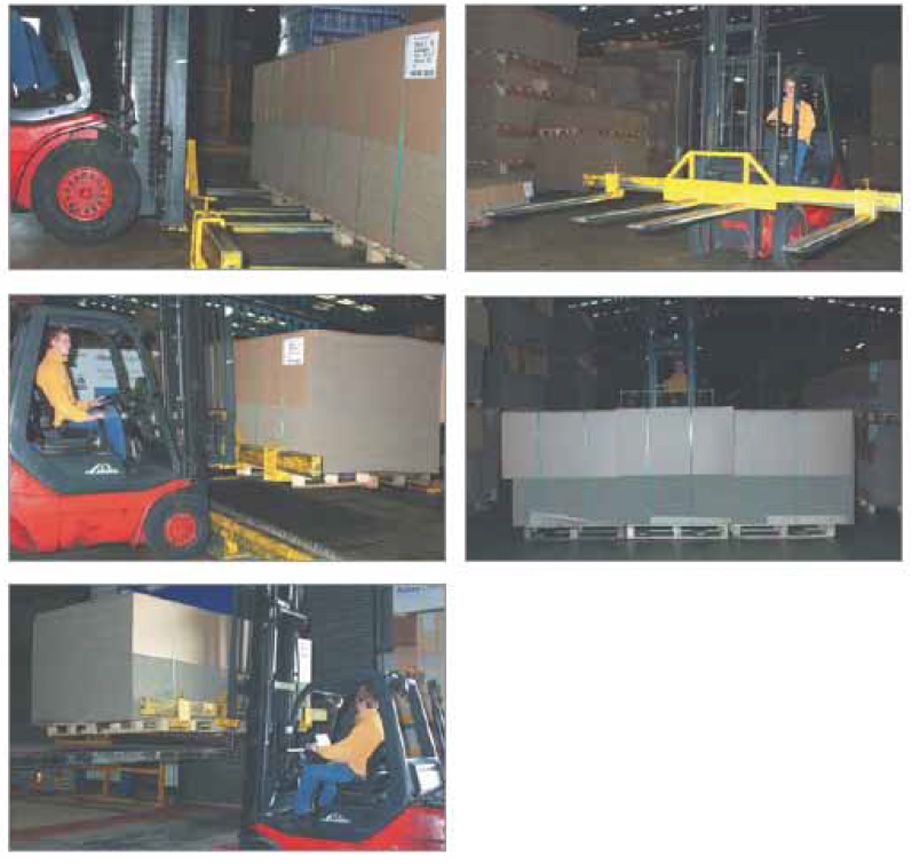Large Sheets Safety Guide
This safety guide is designed to assist those customers who purchase large sheets. It highlights some of the quality and safety considerations that must be taken into account when handling the product using forklift trucks. These guide lines are based on practical experience of handling the product but it is recommended that risk assessments are undertaken that reflect local conditions.
Handling Large Sheets
The handling of large sheets using a conventional forklift truck has health and safety implications and can cause quality issues. Where the sheet cannot be supported by the forks, the board will “sag” at either end causing the back of the board to break. This leaves deep creases in the board which will affect printability. The greatest risk posed by handling large sheets on normal forks by stability.
Instability is caused by:
- The overall weight of the pallets being greater than the lifting capacity of the truck
- The load centre shifting along the forks, so reducing the amount that the truck can lift
- Uncentred loads causing the truck to tip sideways.
To overcome these issues, the use of spreader forks is highly recommended.
Before using spreader forks it is necessary to ensure that:
- They are compatible with the truck being used
- They can be securely attached to the truck
- The truck is re-rated to determine the maximum weight it can lift with the attachment on
- Drivers are given familiarisation training, including how to attach the forks correctly.
When using spreader forks, the operator should ensure that:
- The only pallet of board is lifted at a time
- The forks are located as far under the pallet as possible
- The pallets are central on the forks.
When handling large sizes sheets, only forklift trucks with a minimum lifting capacity of 2.5 tonnes should be considered for use. DS Smith Sheetfeeding stress that need for customers to carry out their own risk assessments to ensure the safe handling of large size sheets, as they are unable to accept legal responsibility in the event of any accident, of whatever nature, taking place at customers’ premises or any third party delivery

